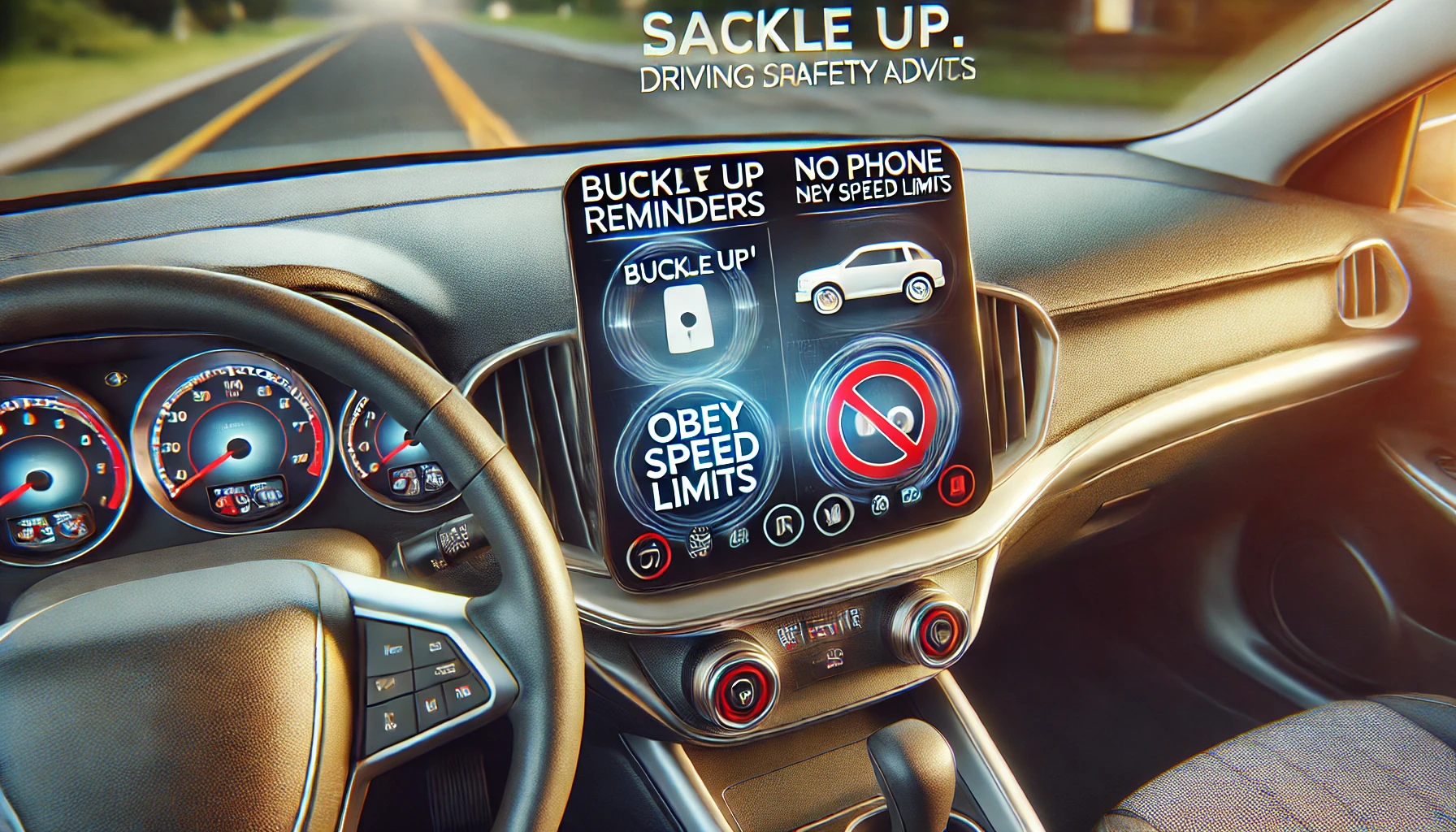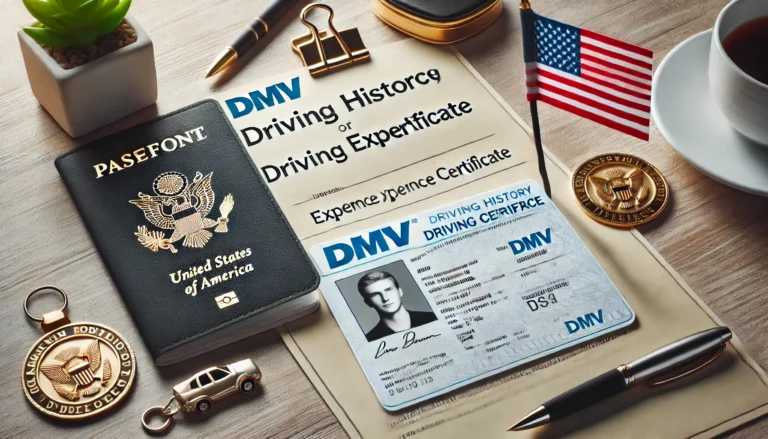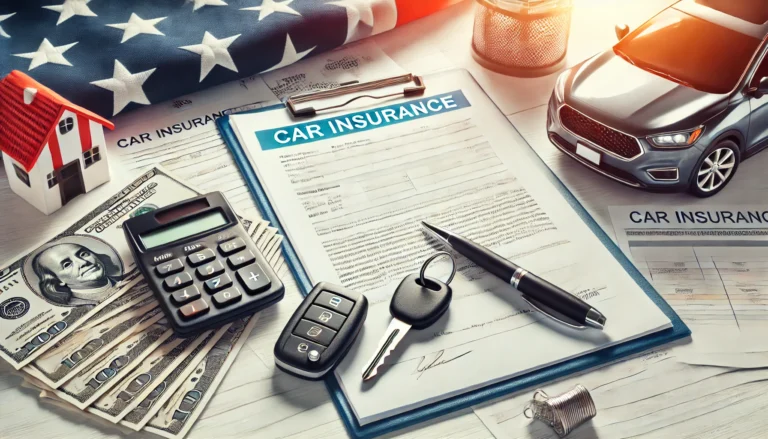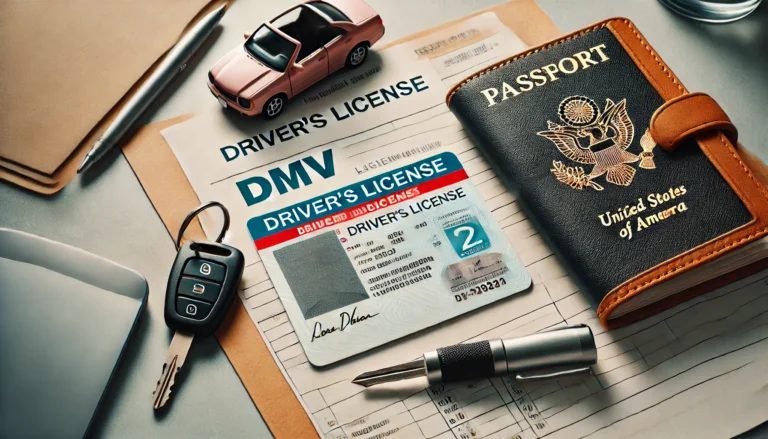USA Driving License Procedure With Easy Steps 2024
Introduction
In the United States, every state has its own set of rules and regulations for obtaining a driving license. This guide outlines the general steps, documents required, and potential challenges you might encounter, whether you’re a first-time applicant, a foreign national, or a diplomat. Driving in the U.S. requires adhering to both national safety standards and local state laws, so it’s crucial to familiarize yourself with the specific requirements in your area.
The driving license application process involves multiple steps, including providing proof of identity, passing a vision test, and completing both theoretical and practical driving exams. Additionally, different states may have varying rules, fees, and reciprocity agreements that could either simplify or complicate the process depending on your personal circumstances.
In this comprehensive guide, we’ll walk you through the complete procedure to obtain a driving license in the U.S., along with the necessary documents, testing requirements, and real-time advice to help you get started.
USA Driving License Procedure With Easy Steps 2024
Table of Contents
- Guidelines for U.S. Citizens Applying for a Driving License
- Guidelines for Non-U.S. Citizens Seeking a Driving License
- Guidelines for Diplomats and International Officials
- Step 1: Choose a DMV Office and Schedule an Appointment
- Step 2: Required Documents for U.S. Driving License Application
- Step 3: Eye Test (Vision Test)
- Step 4: Complete a Driver’s Education Course
- Step 5: Written Knowledge Test (Theory Exam)
- Step 6: Behind-the-Wheel Training and Practical Driving Lessons
- Step 7: Road and Parking Tests
- Special Conditions: International Driver’s License and Reciprocity Agreements
- Fee Structure for U.S. Driving License Application
- Common Challenges and How to Overcome Them
- Driving Safety Advice in the U.S.
- Conclusion
1. Guidelines for U.S. Citizens Applying for a Driving License
In the U.S., driving licenses are issued by state governments, typically through the Department of Motor Vehicles (DMV). The process for obtaining a driver’s license varies slightly depending on your state of residence, but most states follow a similar set of guidelines for U.S. citizens.
Minimum Age Requirement: The legal minimum age to apply for a standard driver’s license (Class D) is 16 or 18 years, depending on the state. In some states, individuals as young as 14 can apply for a learner’s permit.
Proof of Identity: Applicants must provide documents verifying their identity, such as a birth certificate, U.S. passport, or Social Security card. These documents are essential for proving that the applicant is a legal U.S. resident and meets the age requirements for driving.
Proof of Residency: State DMVs require proof that you reside in the state where you are applying for a license. Acceptable documents include utility bills, lease agreements, or other government-issued identification showing your address.
Social Security Number: U.S. citizens must provide their Social Security Number (SSN). This is used for identification purposes and helps the DMV verify your eligibility for a driver’s license.
2. Guidelines for Non-U.S. Citizens Seeking a Driving License
Non-U.S. citizens, including legal residents, students, and expatriates, can also apply for a U.S. driving license, but the requirements are a bit more complex:
Proof of Legal Presence: Non-U.S. citizens must show that they are legally allowed to reside in the country. Commonly accepted documents include work visas, green cards, and student visas (F-1 visa, for example).
International Driver’s License Conversion: Some states allow the conversion of foreign driver’s licenses without the need for a full road test, provided the applicant is from a country that has a reciprocity agreement with the U.S. (e.g., Canada, France, South Korea). However, in many states, you must pass both a written test and a practical driving test.
SSN or Ineligibility Affidavit: Non-U.S. citizens may also need to provide an SSN or sign an affidavit confirming they are ineligible for one. This affidavit usually states that you do not qualify for an SSN but are still eligible to apply for a license.
3. Guidelines for Diplomats and International Officials
Diplomats and international officials have a simplified process for obtaining a U.S. driving license:
Diplomatic Identification Card: A diplomatic ID card issued by the U.S. Department of State must be presented as part of the application process. This document confirms the applicant’s status as a foreign official.
Reciprocity Agreements: Diplomats from countries with reciprocity agreements may be able to exchange their foreign license for a U.S. license without taking a road test.
4. Step 1: Choose a DMV Office and Schedule an Appointment
The DMV is responsible for issuing driver’s licenses in each state. You should locate your nearest DMV office online and schedule an appointment. Some states require appointments for all services, while others may allow walk-ins.

5. Step 2: Required Documents for U.S. Driving License Application
When you arrive at the DMV, you will need to submit the following documents:
- Proof of Identity: A U.S. passport or birth certificate is required to confirm your identity.
- Proof of Residency: Utility bills, a lease agreement, or bank statements that show your current address.
- Social Security Number: Provide your SSN or sign an affidavit if ineligible.
- Proof of Legal Presence: Non-U.S. citizens must present documentation such as a visa, green card, or work permit.
- Application Form: Fill out the DMV application form, either online or at the DMV office, depending on your state.

6. Step 3: Eye Test (Vision Test)
All states require that drivers pass a vision test before being issued a license. The test ensures that you have adequate eyesight to drive safely. If your vision is below the required threshold, corrective lenses may be mandated.
7. Step 4: Complete a Driver’s Education Course
If you’re a first-time driver under the age of 18 (or 21 in some states), you may be required to complete a driver’s education course before taking the road test. This course covers the basics of road safety, traffic laws, and driving techniques.
8. Step 5: Written Knowledge Test (Theory Exam)
Once you have completed your driver’s education (if required), you will need to pass a written test. This test assesses your understanding of U.S. traffic laws, road signs, and general safe driving practices.
9. Step 6: Behind-the-Wheel Training and Practical Driving Lessons
After passing the written test, you’ll begin behind-the-wheel training. This phase is crucial for gaining real-world driving experience, including:
- Basic Driving Maneuvers: Learning to park, make turns, merge into traffic, and safely change lanes.
- Traffic Navigation: Driving in various traffic conditions, such as highways, urban streets, and rural roads.

10. Step 7: Road and Parking Tests
Once you’ve completed behind-the-wheel training, the final step is the road test. This practical test evaluates your ability to safely operate a vehicle in real-world conditions. You will be tested on your ability to follow traffic rules, perform parking maneuvers, and demonstrate safe driving practices.
11. Special Conditions: International Driver’s License and Reciprocity Agreements
Many states in the U.S. allow foreign drivers to use their international driver’s license for a limited time. However, after this grace period (often between 6 months and 1 year), you will need to apply for a U.S. license. Some states have reciprocity agreements with other countries, allowing foreign drivers to convert their licenses without retaking tests.
12. Fee Structure for U.S. Driving License Application
Fees for obtaining a U.S. driving license vary significantly from state to state. Generally, the total cost will include:
- Application Fee: This can range from $20 to $100, depending on the state.
- Road Test Fee: Some states charge separately for the road test, usually around $25 to $50.
- Renewal Fees: U.S. licenses typically need to be renewed every 4 to 8 years, with renewal fees varying by state.
13. Common Challenges and How to Overcome Them
The driving license process can be confusing for many applicants. Some common challenges include:
- Long Wait Times: Many DMVs have lengthy wait times due to high demand, so booking an appointment in advance is highly recommended.
- Documentation Errors: Double-check your documents before arriving at the DMV to avoid delays or having to return with missing paperwork.
- Language Barriers: If English is not your first language, consider studying for the written test in your native language or bring a translator.

14. Driving Safety Advice in the U.S.
Driving in the U.S. comes with its own set of challenges, especially for those unfamiliar with local traffic laws or road conditions. Some tips include:
- Always Wear Your Seatbelt: It’s a legal requirement in most states, and it significantly reduces the risk of injury in an accident.
- Obey Speed Limits: Speed limits vary depending on the state and type of road, so always be aware of posted signs.
- Avoid Distracted Driving: Using your phone while driving is illegal in many states and can lead to accidents or fines.
15. Conclusion
The process of obtaining a driving license in the United States is systematic but can vary significantly depending on the state. Whether you are a U.S. citizen, non-U.S. citizen, or diplomat, understanding the necessary steps and required documentation will help you navigate the process smoothly. Prepare well in advance, practice safe driving habits, and ensure you meet the legal requirements to obtain your license in 2024.







